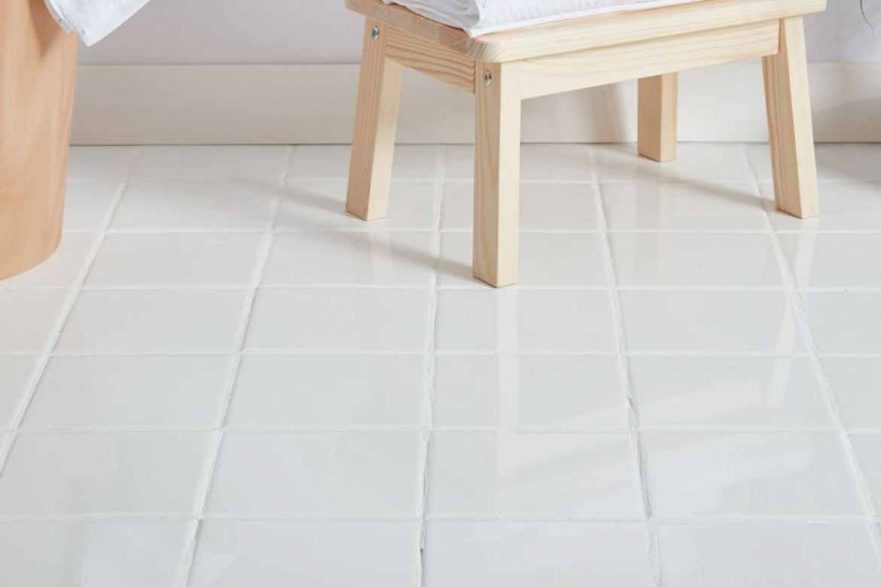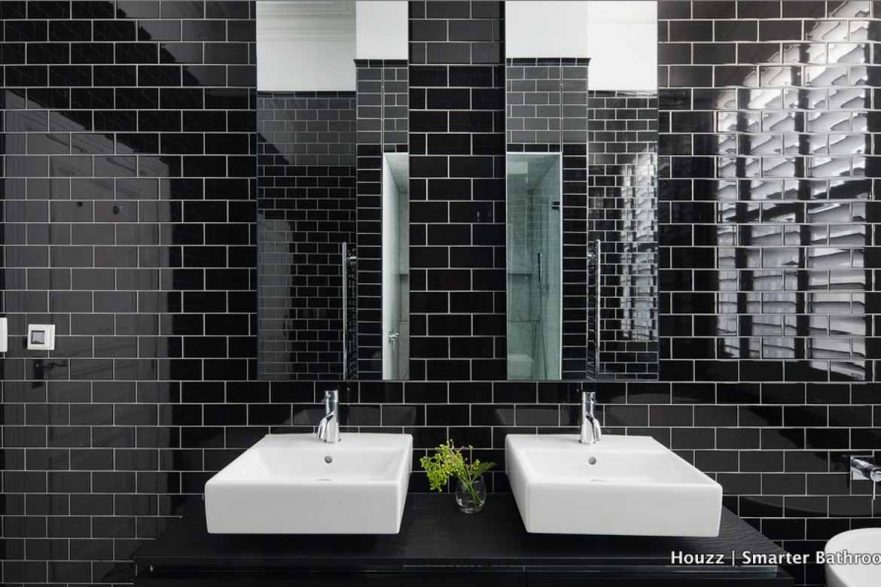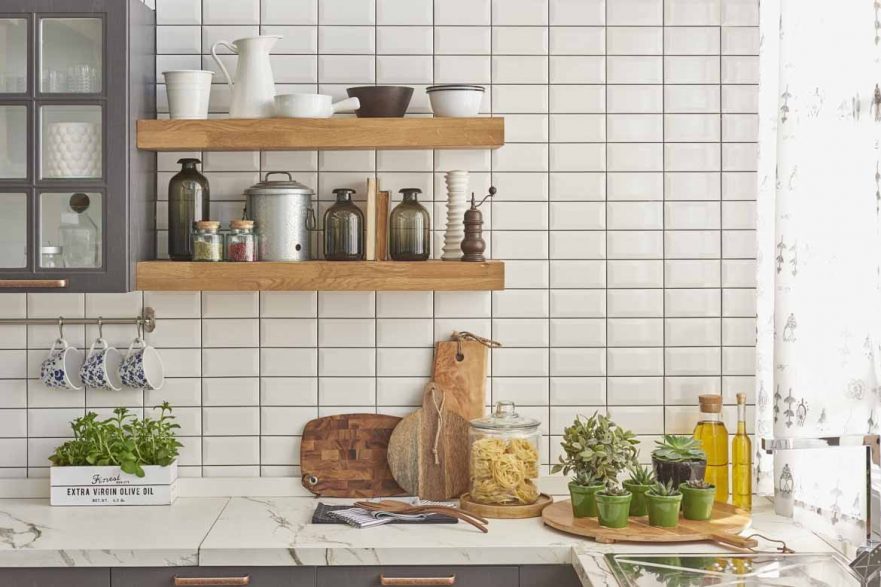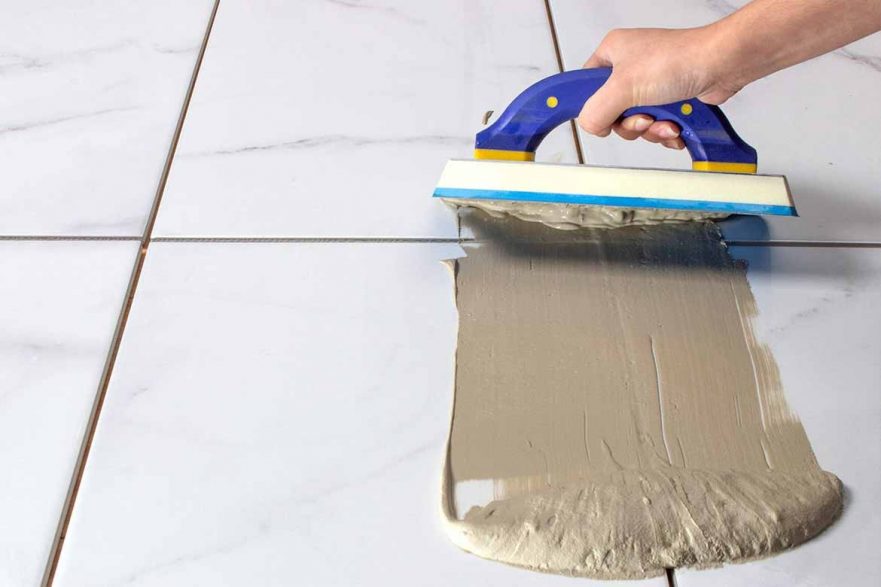Grout meaning
Grout is a substance used to fill gaps between building materials, most commonly employed to bond tiles together. Grout is composed from a mixture of cement, sand and water. There are many possible applications of grout including connecting pre-cast concrete, strengthening the joints between floor tiles or wall tiles, filling voids, embedding rebar in masonry walls, and sealing joins.
Grout is very similar to mortar – the substance used to lay bricks – only with slightly different properties. For one, grout has a higher water content than mortar and mortar is formulated with a lime additive that is not used in grout. Grout is therefore thinner than mortar, which means the two substances are not interchangeable.
Mortar does not flow like grout does, so if used in the wrong setting it is likely to leave gaps and holes as it dries. Grout, being thinner and more watery, will flow to evenly fill the space. This makes it the ideal product for filling gaps like those between tiles, while mortar is a stronger substance best suited to binding materials together.
Grout is a crucial part of tiling and no tiled floor looks complete without it. Grouting tile gives the floor a crisp and level appearance. It prevents grime and dirt build up between the cracks of tiles, and it strengthens the floor by securing the tiles in place. There are two main types of grout, determined by the base substance. Cement grout is comprised from cementitious powder mixture, while epoxy grout is created by mixing epoxy resins and a filler powder.
Cement based grouts are available sanded and unsanded. Unsanded cement grout is ideal for tight spaces, such as a tiny gap between tiles, while sanded grout is ideal for larger gaps. Sand prevents the cement from shrinking, making it a better mixture to fill wide spaces. Newer cement grout has polymers to improve the flexibility of the substance as cement grout can stain and without it will be susceptible to cracking.
Epoxy grout, on the other hand, is extremely durable and appropriate for use in heavy traffic areas. Epoxy grout is resistant to stains, water damage, grease, acid, and general wear. This makes it the optimal choice for grouting, however, it can be quite expensive. Epoxy grout is also known to cause discolouration on the surface of unsealed tiles. Though it used to be a difficult substance to manage, recent developments in epoxy grout manufacturing have seen the addition of workability-improving detergents.
What colour grout to use/ how to clean grout in tiles

Deciding which grout type is best for your tiling is usually determined by the width. Sanded grout is the standard choice for interior flooring as it is durable, easy to work with, and easy to maintain. Cleaning grout is a matter of scrubbing with warm water, then spraying with a 1:1 mixture of vinegar and water, leaving for five minutes, and scrubbing again with a larger brush in a circular motion.
Grouting colour is best determined by the colour of the tile; generally, grout should be as close a match to the tile colour as possible. This will help the grout lines to blend in and will make the joins in the floor less obvious. The most common colours of grouting are white and grey. Some choose to use their grout as a way to stand out, contrasting black tile with white grout or white tile with dark grout for a chessboard-like aesthetic.

How much does grout cost?
The cost to regrout a bathroom is usually between $100-$200. Grout itself comes fairly cheaply. You can purchase bags of grout from most major hardware stores such as Bunnings for as little as $1.50-$22 per kg. The cost will vary depending on the size of the bathroom, as well as the complexity of the job if you choose to hire contractors. Waterproofing tiles/grout for the shower or bathroom areas can be complicated, so this is not the best area to DIY grouting if you are inexperienced.
What do you need to grout tiles?
To grout tiles, you will need a few tools and materials. These include;
1. Caulk gun
2. Grout float
3. Microfiber towel
4. Margin trowel
5. Putty knife
6. Utility knife
7. Tiling sponge
8. Bucket

Grouting tiles: DIY how to grout tiles
Grouting tiles can be broken down into a few simple steps – though each should be done with care.
Step One: Choose and gather your materials
This is the preparation step. You will need to first select the type, style and colour of grout that you wish to install. Next, gather all of the materials in the above list.
Step Two: Mixing the grout
Once you have everything and are ready to begin, the first step is mixing the grout. This will be a case of reading the manufacturers instruction on the grout packaging, as the mixing process for each type of grout is different. Mix thoroughly and avoid adding excess water.
Step Three: A quick practice
Select a small area of the floor – preferably in the corner or somewhere likely to be out of sight (such as underneath a couch) – to begin your practice run. This is a great way to test your technique and see what your grout colour looks like in action rather than jumping straight into it.
Step Four: Apply the grout
Once you have decided all is well with the mixing and your technique, apply the grout to the rest of the area. This is done with a grout float, which you should use to fill the joints of the tiles with grout. Hold the grout float at a 45 degree angle (this is crucial to avoid air bubbles) and work the grout into the joints without leaving any gaps by making sweeping circular motions. After you have finished this step with all of the sections, its time to wipe away the excess grout and thoroughly clean the tiles.

How to regrout tile without removing old grout
The same steps apply for new grout over the top of old grout. You will need to clear a space for the grout to slot into over the existing grout, which usually needs to be at least 2 millimetres to be effective.
How long does grout take to dry?
Grout takes around 24-72 hours to dry, so be sure to wait a minimum of 24 hours before doing anything that might jeopardize the grout’s drying process. This is especially important when it comes to bathroom grouting as a premature shower or any other water splash could ruin the grout and force you to start over.

